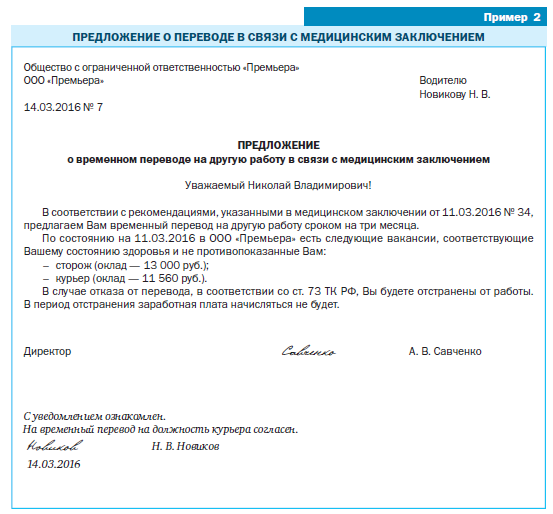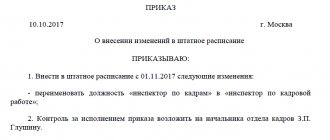What does it mean
Federal Law No. 79 “On the State Civil Service of the Russian Federation,” adopted in 2004, established the grounds for release.
These include:
- Agreement between employee and organization.
- Expiration of the contract.
- The desire of the employee.
- Initiative of the company's management.
The measure in question is applied if there are grounds specified in the laws. This is the failure to take any measures, the employee carrying out entrepreneurial activities, etc. For some categories of employees, exemption is applied subject to a corresponding decision of the head of state.
If we talk about the staff of an organization conducting business activities, it is assumed that the relationship with the employee will be terminated. The initiative comes from management. In fact, this action is similar to dismissal.
Difference from dismissal
Sometimes the release is represented by the transfer of a person to another position. The person will continue to work in this company. Transfer to a lower position is expected.
Demotion is a measure of punishment for an offense committed. For example, failure to fulfill the duties assigned to the employee. Dismissal implies the final termination of the employment relationship.
Transfer at the initiative of the employer (temporary)
According to Part 1 of Art.
72.2 of the Labor Code of the Russian Federation, by agreement of the parties, concluded in writing, an employee may be temporarily transferred to another job with the same employer for a period of up to one year, and in the case where such a transfer is carried out to replace a temporarily absent employee, for whom, in accordance with the law, the place of work is retained until the employee returns to work. When registering a temporary or permanent transfer of an employee to a lower position at the initiative of the employer, it is important to obtain the employee’s consent. To do this, it is necessary to draw up an additional agreement to the employment contract (example 1).

Based on an additional agreement to the employment contract, the employer issues an order to transfer the employee to another job.
Art. 81 of the Labor Code of the Russian Federation grounds for dismissal
This norm contains a list of grounds for termination of employment relations.

These include:
- termination of the organization’s activities at the official level;
- reducing the number of employees at the enterprise;
- based on the results of the certification, a discrepancy was established with the person’s qualifications for the position he occupied;
- there is a change in the management of the enterprise and owners;
- repeated failure to fulfill the duties assigned to the person (it should be taken into account that he has previously received disciplinary sanctions and there are no valid reasons for such behavior);
- violation of duties of a gross nature;
- absenteeism without a valid reason;
- when an employee goes to work in a state of intoxication;
- a person commits an illegal act, expressed in embezzlement or theft of valuables from an organization;
- other reasons.
Demotion due to health reasons
An employee who needs to be transferred to another job in accordance with a medical report issued in the manner established by federal laws and other regulatory legal acts of the Russian Federation, with his written consent, the employer is obliged to transfer to another job available to him that is not contraindicated for the employee for health reasons (h 1 Article 73 of the Labor Code of the Russian Federation). Depending on the doctor’s recommendations, such a transfer can be either permanent or temporary. Note :
The medical report must be issued in the Procedure established by Order of the Ministry of Health and Social Development of Russia dated May 2, 2012 No. 441n “On approval of the Procedure for issuing certificates and medical reports by medical organizations.” When an employee is transferred to another lower-paid job with a given employer in accordance with a medical certificate issued in the prescribed manner, labor legislation establishes certain guarantees for such an employee. So, according to Art. 183 of the Labor Code of the Russian Federation, he retains the average earnings from his previous job for one month from the date of transfer, and in case of transfer due to a work injury, occupational disease or other work-related health damage - until permanent loss of professional ability to work is established or until recovery employee.
At the end of the period, the transfer as a general rule is terminated, and the employee is given the work provided for in the employment contract.
If, in accordance with a medical report, an employee needs a temporary transfer to another job for a period of more than four months or a permanent transfer, then if he refuses the transfer or the employer does not have the corresponding job, the employment contract is terminated in accordance with clause 8 of part 1 of Art. 77 of the Labor Code of the Russian Federation (Part 3 of Article 73 of the Labor Code of the Russian Federation).

Information about the temporary transfer of an employee is not entered into the work book. If necessary, he can confirm this fact based on the following documents:
- a copy of the additional agreement to the employment contract on temporary transfer to another job;
- a copy of the order for transfer to another job (the employee has the right to request it from the personnel department in accordance with Article 62 of the Labor Code of the Russian Federation).
Information about transfers to permanent work must be entered into the employee’s work book no later than a week later, duplicating them in the employee’s personal card.
Sample application for release
You can be relieved of your position by:
- transfer to another place of work;
- dismissals.
In both cases, you need to fill out an application. Otherwise, there are no grounds for terminating the employment relationship. The reasons for making such a statement are varied. For example, health status.
It will not be possible to completely relieve an employee from performing the duties assigned to him without terminating the employment agreement. The only possible option is to transfer to another place of work in the same company.
The application must indicate the name of the organization where the person works and information about the manager. Employee data is subject to reflection. The request for dismissal from office is indicated, indicating the reasons. At the end of the document, the employee puts the date of preparation and his signature.
A sample application for the General Director can be downloaded below:
How to ask to be relieved of your position at your own request
A human resources specialist who has received a statement with the text: “I ask you to relieve me from my position at my own request,” should not rush to formalize the dismissal of the employee.
On the contrary, a deviation from the usual wording “please fire me” should alert him.
It’s one thing when an employee wrote something like that out of ignorance and he can be asked to correct the mistake, but it’s another thing if he did it intentionally.
Release does not mean dismissal
Courts, when considering claims on labor disputes and illegal dismissals, clearly recognize: in order for an employer to have the right to terminate an employment contract at the request of an employee, the application must contain a phrase that cannot be interpreted in two ways. The employee must clearly express his intention to leave the company. Such phrases include:
- fire;
- terminate the employment relationship;
- terminate the employment contract.
The desire to “get rid” of a position can only be interpreted as a refusal to perform certain job functions that are prescribed to the employee. And this cannot be interpreted as an expression of will to terminate the employment contract.
In other words, the employee doesn’t want to work anymore, but doesn’t want to quit either. The phrases “release from office”, “consider me free”, “resign” are neutral expressions that cannot be recognized as grounds for dismissal.
In the Labor Code, performing work is a mandatory function of an employee holding a certain position on the staff of an enterprise. Without this, the existence of labor relations between employee and employer becomes impossible.
An exception may be a situation when an employee works part-time and wants to give up only one of his positions. That is, he asks to be relieved of part of the work, without demanding to be relieved of other responsibilities.
If there is only one position, it is not possible to fulfill the employee’s requirement stated in the application. The employer cannot provide the employee with complete freedom from duties without terminating the contract.
Responsiveness
To resolve the issue with an incorrect statement, the head of the company must discuss the statement with the author. A loyal employee will most likely explain the purpose for which he wrote such a document. Several development options are possible:
- An employee wants to resign, but wrote an incorrect application out of ignorance. In this case, he should be asked to rewrite the document, providing a sample with the correct wording.
- The employee has no intention of resigning. He simply wants to change his position and is waiting for proposals for a new appointment from the manager. That is, the employee, with his statement, expressed a request to be transferred to another job. Based on such an application, a transfer cannot be processed, since the name of the desired position is not stated in the text. And the transfer itself is not made at the initiative of the employee, but by agreement of both parties to the employment contract. There is only one result: the employee cannot be fired, and the issue of transfer is decided by each employer together with the author of the application. If an agreement is reached, the employee writes a new application, and the change in position is confirmed by signing an addendum to the contract by both parties.
- A release from a position may camouflage the employee’s need to take time off or vacation: during this period he should not work, but the employment contract is not terminated. In this case, again, the employee needs to rewrite the application, accurately articulating his desire.
Official way to solve the problem
An employee is not always loyal to the company or its manager. The controversial text of the statement may be the result of a conflict , after which the employee decided to “annoy” his superiors. And in this situation, a verbal request will not be enough.
Then the employer needs to prepare and send a written response to the author of the document. It should contain the following information:
- A message explaining that, from the point of view of labor law, the statement is not considered a basis for taking any legal action. Freedom from a position can be granted only by severing the employment relationship or transferring to another appointment.
- A reminder that the employee is obliged to fulfill his duties as provided for in the contract and job description. Failure to perform (refusal to perform work) by an employee is a disciplinary violation. The Labor Code contains detailed information about the measures that an employer has the right to apply to an employee who has committed misconduct, including dismissal.
If the author of the document wants to leave the ranks of the company, then he needs to resubmit the application, the text of which must be formulated correctly: “dismiss” and not “release from his position.”
When dismissal occurs by agreement of the parties, an application is not submitted, but the employee and employer need to draw up an agreement to the employment contract , the text of which must clearly state the consent of both parties to terminate the contract.
Specific exception cases
The described procedure for receiving an application requesting “release” is not valid in all cases.
For example, if such an application is submitted by a civil servant, then it is interpreted unambiguously and the employee is fired.
The wording “release from position” is used in regulations, and the procedure for terminating a contract with a civil servant is described in Art. 33 Federal Law-79 dated July 27, 2004
Another exceptional situation is removal from a position due to health conditions, especially when it comes to harmful work. An employee may apply to be excused from work due to ill health.
But if he does not have a medical certificate, then the employer can temporarily suspend him from performing work contraindicated for health reasons by sending him to a medical organization for examination.
After the conclusion is received, the employee is transferred to another job.
Source: https://trud.help/uvolnenie/osvobodit-ot-zanimaemoy-dolzhnosti/
Sample order for dismissal from a position
To terminate an employment relationship with a specific employee or transfer him to another position, an order must be drawn up. Otherwise, the person may claim in court that the dismissal was illegal. The order reflects:
- Information about the company and its code.
- Name of the act.
- Document Number.
- Data of the employee who is being relieved of his position.
- Day and grounds for termination of employment relations.
- Information regarding the use of rest time.
- Manual data and its description.
Release of the General Director
There are several reasons for the dismissal of the CEO.

Including:
- end of contract;
- committing unlawful acts;
- the will of the employee;
- change of owner of the company.
Labor relations can be terminated at the initiative of the founders of the organization. This option is considered the simplest. The sequence of actions is reflected in labor legislation.
The dismissal process is carried out on a general basis. They are reflected in Article 77 of the Labor Code. In addition, the basis may be the termination of the company's activities due to insolvency. When dismissing, you must comply with the law.
The basis may be a decision made at a general meeting of founders. It depends on the form of ownership of the enterprise. When these persons have given their consent, the process continues in the standard sequence.







